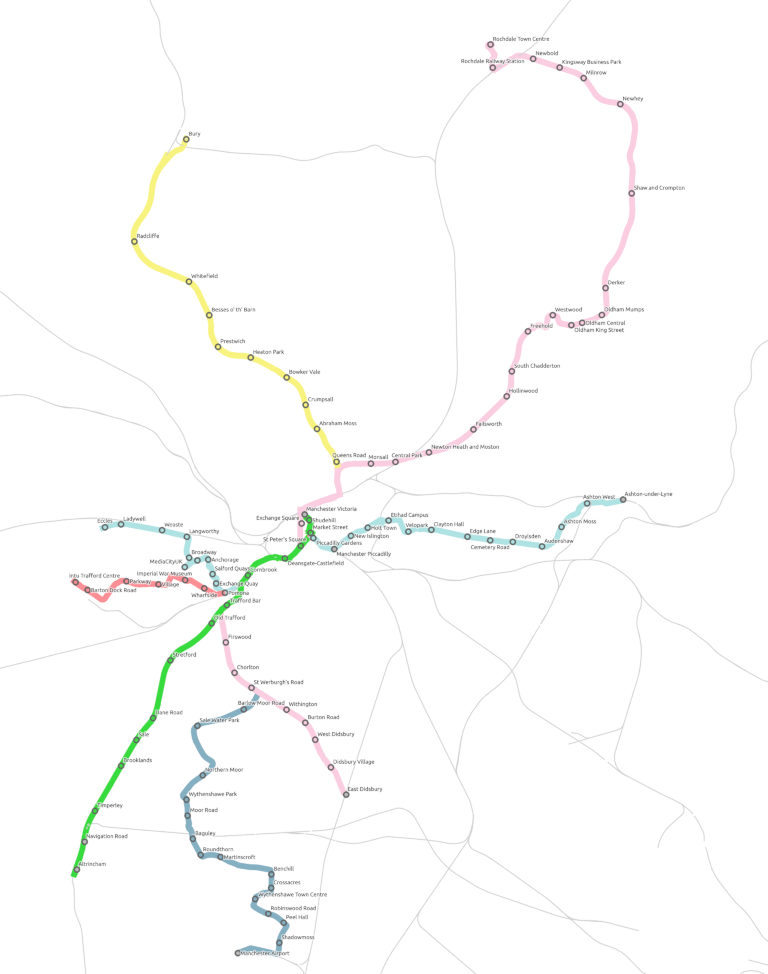Tram Guide

Manchester’s tram network is one of the most extensive light‐transit networks in the world.
Big warning!
(Unlike the London Underground) The tram network does not cover all of Manchester. However, it reaches a long way—it runs to many satellite towns.
Maps
Our map of ground location see the map large,

Or use the Official Bee Network map
Times
Incidents aside, you’ll never wait more than 20 mins for a tram. Often, less than 5 mins. Official route frequency is 12 mins.
Daily times (roughly),
Mon–Sat
6am to 12pm
Sun and public holidays
7am to 12pm
Payment
You must pay before you get on a tram,
”Contactless”: scan your bank card at start and end of trip
See the TFGM explanation. Very easy and convenient. If you buy many tickets, fares are capped. Can be unnerving—no visual or paper record
Buy a ticket from the platform machines
Easier to understand than contactless, and can be used to buy day/week/monthly passes. You get receipts
Virtual ticket through the Bee Transport app
Need to register with the App and, if asked by inspectors, fiddle with your phone. But will tell you when the ticket expires and can buy tickets before travel
Smartcard (reusable card)
Smartcards can carry bus passes also (and are the best solution for bus passes). They are reusable and less awkward than a phone app. Smartcards can be used for trams, but see below
Smartcards use a system called Bee Card accounts. To put a new tram pass on a smartcard, you must go to a ticket office, or use a Bee Card account—the Bee app can not do this. You can order a Bee smartcard through a Bee Card account or by visiting a ticket office.
Route information
Google Maps, or any other app that displays open transport data, will show tram options. Or try Manchester’s unified Bee Transport app,
How to find the right tram?
The attempt to color code tram routes (the London Underground uses colors and route names like ‘District line’, ‘Waterloo and City line’ etc.) is not much used. Did this not work because of the overlapped spider layout? Anyway, Manchester’s trams are labelled, and information boards display, the last stop on the route. You need to use a map to find the last stop on the route you want to use.
Good and bad
Good,
Frequent service
Routes show on apps
Easier than a bus
Cost more than a bus, but not excessive
Connections to some satellite towns
Powered by sustainable energy
Bad,
Routes do not cover the city e.g. Stockport, Bolton
At peak daytime hours, busy and must stand
Customer satisfaction surveys return lower ratings than similar systems
Mostly, people think of the trams as a key feature of modern Manchester—people only wish there were more seats and more routes.
